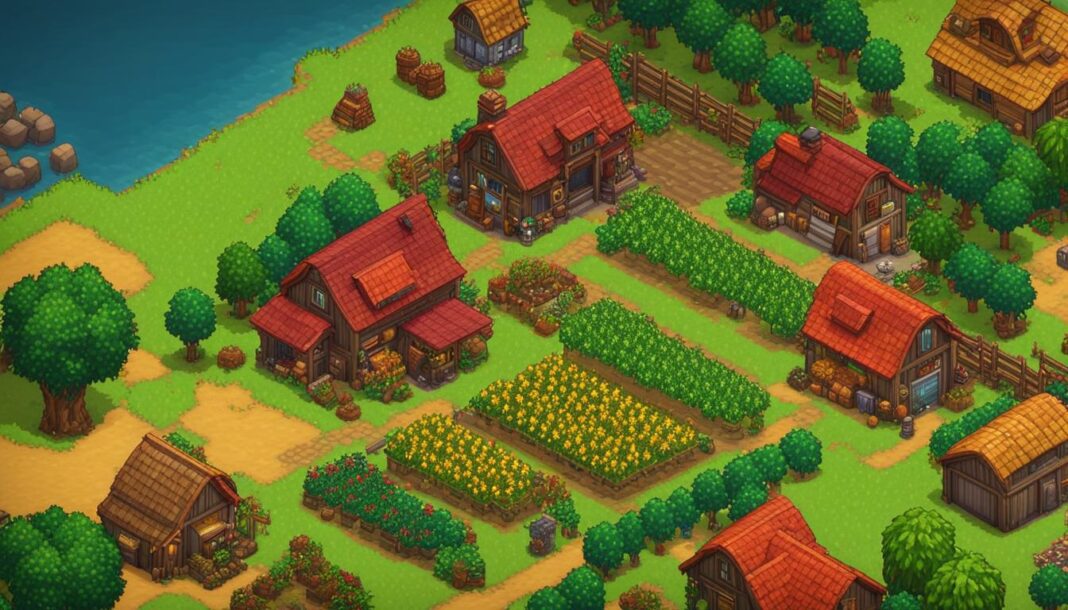Are you ready to embark on a journey to create the best farm in Stardew Valley? Look no further! In this ultimate guide, we will delve into the world of farming in Stardew Valley and provide you with valuable tips, tricks, and design ideas to help you build a prosperous and stunning farm. From choosing the perfect farm layout to maximizing profits and efficiently utilizing your farming spaces, we’ve got you covered. Get ready to cultivate your dreams and experience the joys of rural life in Stardew Valley!
Choosing the Perfect Farm Layout
In Stardew Valley, selecting the perfect farm layout is a crucial decision that can greatly impact your gameplay experience. With five main farm layouts to choose from – Standard Farm, Riverland Farm, Forest Farm, Hill-top Farm, and Wilderness Farm – each offering unique features and challenges, it’s important to consider your playstyle and goals.
The Standard Farm layout is the most versatile and balanced option, providing ample space for crops and animals. The Riverland Farm layout is perfect for fishing enthusiasts, with its numerous bodies of water that allow for an abundance of fishing opportunities. The Forest Farm layout offers additional foraging areas and is ideal for players who enjoy exploring and gathering resources.
For those seeking mining opportunities and a picturesque setting, the Hill-top Farm layout is an excellent choice. Finally, the Wilderness Farm layout provides an exciting challenge with regular monster spawns, making it ideal for players who enjoy combat and the thrill of defending their farm.
To help you decide on the best farm layout for your Stardew Valley adventure, utilize the Stardew Valley farm planner tool. Experiment with different layouts, visualize your farm design, and find the perfect balance that suits your desired gameplay. With careful consideration, you’ll be well on your way to creating a farm that is both efficient and enjoyable to manage.
Farming Tips and Techniques
When it comes to creating the best farm in Stardew Valley, mastering farming techniques is key. Knowing which crops to plant and when to plant them, as well as which animals to raise and how to maximize their productivity, can significantly impact your farm’s success and profitability.
Let’s start with crops. Understanding which crops yield the highest profits is essential. Consider planting crops such as Ancient Fruit, Starfruit, and Cranberries, as these have high profit margins and can generate substantial income. Additionally, be mindful of crop seasons and plan your planting accordingly to ensure a continuous harvest throughout the year.
Now, let’s turn our attention to farm animals. Raising the right animals can provide valuable resources and increase your profits. Consider investing in high-quality animals like void chickens or pigs, as they can produce valuable resources such as void eggs and truffles. Take good care of your animals by ensuring they have access to food, water, and a clean environment.
Maximizing Farm Efficiency with Upgrades
To optimize your farm’s efficiency, consider investing in various farm upgrades. Upgrading your barn and coop allows you to accommodate more animals, increasing your potential for profit. Additionally, investing in farm buildings like silos, sprinklers, and scarecrows can help automate tasks and protect your crops from pests.
Another crucial upgrade is the greenhouse. By unlocking and utilizing the greenhouse, you can grow high-value crops year-round, ensuring a steady flow of income regardless of the season. The greenhouse also provides an opportunity to experiment with different crop combinations and maximize your farm’s productivity.
By implementing these farming tips and techniques, you can create a highly profitable and efficient farm in Stardew Valley. Remember to constantly adapt and refine your strategies as you uncover new possibilities and optimize your farming operations.
Maximizing Profits through Farming
When it comes to creating the best farm in Stardew Valley, maximizing your profits is key. By focusing on the most profitable crops and animals, you can ensure a steady flow of income for your farm.
One of the most lucrative crops in Stardew Valley is the Ancient Fruit. This crop can be grown year-round in the greenhouse and yields a high profit margin. Other highly profitable crops include Starfruit and Cranberries, which can be grown during specific seasons. By strategically planning your crop rotation and focusing on these high-yield crops, you can significantly boost your earnings.
In addition to crops, raising the right animals can also contribute to your farm’s profitability. Animals such as void chickens and pigs can provide valuable resources like void eggs and truffles, which can be sold for a high price. By choosing the best farm animals and taking good care of them, you can generate additional income for your farm.
Maximizing Profits with Crop Quality
In Stardew Valley, the quality of your crops also plays a role in maximizing profits. By utilizing quality fertilizer and taking good care of your crops, you can increase their quality, resulting in higher prices when sold. Invest in farm buildings like silos and sprinklers to automate tasks and ensure your crops are well-tended, which can lead to higher-quality produce and increased profits.
By focusing on high-yield crops, raising profitable animals, and maximizing the quality of your produce, you can achieve maximum profitability on your farm in Stardew Valley. With careful planning and strategic choices, you can turn your farm into a thriving and prosperous venture.
Efficient Use of Farming Spaces
Efficient utilization of your farming spaces is crucial for maximizing productivity in Stardew Valley. Each farm layout offers different amounts of usable space, so it’s important to make the most of what you have. One strategy to optimize your fields is to consider crop rotation. By planting crops with similar growth times, you can streamline your harvesting process and avoid wasteful gaps in your planting schedule.
Companion planting is another technique to efficiently use your farm space. Certain crops grow well together and can benefit from each other’s presence. For example, planting flowers near your crops can attract bees, which will increase their pollination and yield. Similarly, planting crops like beans next to corn can provide natural trellis support.
One of the keys to maximizing your profits is utilizing the greenhouse space effectively. The greenhouse allows you to grow crops year-round, regardless of the season. Focus on growing high-value crops in the greenhouse, such as ancient fruit, starfruit, or strawberries, to ensure a steady flow of income throughout the year. Additionally, take advantage of the sprinklers and Junimo huts to automate watering and harvesting tasks, saving you time and energy.
Optimizing Greenhouse Space
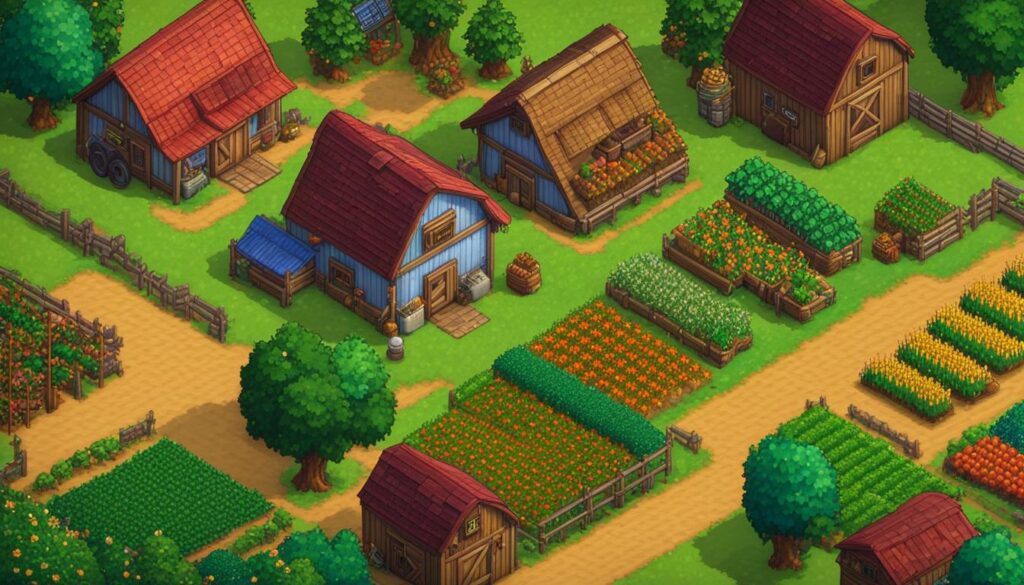
Consider utilizing the corners and edges of your farm for additional farming spaces. These areas are often neglected but can provide valuable space for crops, barns, or other farm buildings. By expanding your farm’s boundaries and using these spaces efficiently, you can significantly increase your overall productivity.
Efficient use of farming spaces is not only about maximizing profits but also about creating an organized and visually pleasing farm. Plan your layout carefully, considering aesthetics and functionality. Use paths and fences to divide your farm into sections and create designated areas for different purposes. This will make it easier to navigate your farm and keep things organized.
Community Center and Joja Mart Options
As you progress in Stardew Valley, you’ll face a pivotal decision: restore the Community Center or side with Joja Mart. The Community Center route offers a more immersive and rewarding experience, as you complete bundles to unlock various farm upgrades. These upgrades, such as the Greenhouse, Quarry, and Bridge repairs, can greatly enhance your farming capabilities and open up new opportunities. On the other hand, choosing Joja Mart allows you to purchase these upgrades with money, but it comes at the cost of a different storyline and community interactions. It’s important to consider your goals and playstyle when deciding which path to take.
Both options have their pros and cons, so it’s worth weighing the benefits and drawbacks carefully. Restoring the Community Center not only provides upgrades but also encourages exploration and interaction with the game’s charming characters. On the other hand, opting for Joja Mart offers a more streamlined approach, allowing you to bypass bundle requirements and focus purely on purchasing upgrades. Ultimately, the choice between these two paths will depend on your personal preferences and the type of gameplay experience you’re seeking.
Regardless of which option you choose, it’s important to remember that Stardew Valley is about more than just farming. It’s a game that emphasizes community and the joy of rural life. So, consider the impact of your decision on the overall village and the relationships you build with its inhabitants. Each choice you make will shape your farm and the world around it, so choose wisely and revel in the journey.
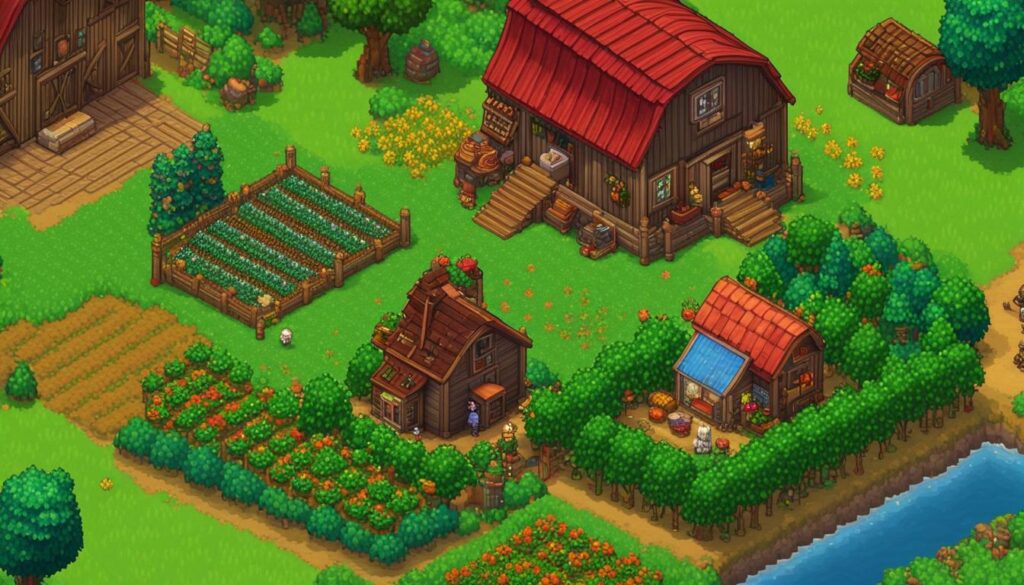
Farming in Different Seasons
Each season in Stardew Valley presents unique farming opportunities. By strategically choosing crops that thrive in specific seasons, you can maximize your profits and ensure a steady flow of income throughout the year.
During spring and summer, crops like Strawberries and Blueberries are highly profitable and can generate substantial income. These fruits have short growth times and high sell values, making them ideal choices for these seasons.
Seasonal Crops for Maximum Profit
When fall arrives, Pumpkins and Cranberries take center stage. These crops can be highly lucrative and offer excellent returns on investment. Consider dedicating a significant portion of your farm to growing these fall favorites to maximize your earnings during this season.
Don’t forget to also take advantage of the seasonal fishing opportunities and foraging events that occur throughout the year. These activities can provide additional income and resources to supplement your farming endeavors.
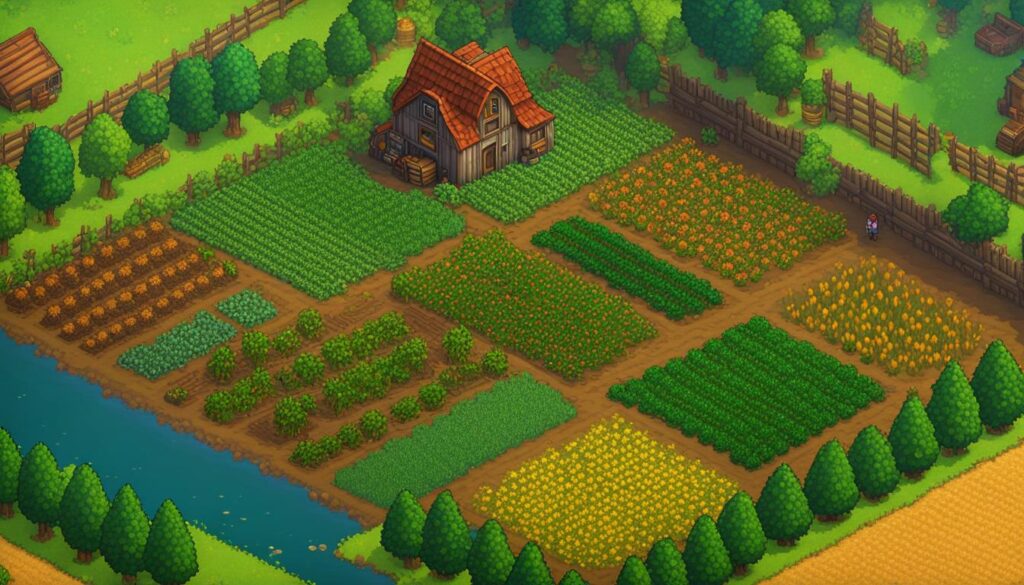
With careful planning and strategic crop selection, you can ensure that your farm remains productive and profitable year-round. Keep an eye on the seasonal changes and adjust your planting schedule accordingly to make the most of each season.
Next, we’ll explore some valuable farming tips for beginners, helping you get started on your journey to creating the best farm in Stardew Valley.
Farming Tips for Beginners
If you’re new to Stardew Valley, starting a farm can feel overwhelming. But fear not, we’ve got you covered with some essential farming tips to help you get started on the right foot!
1. Prioritize basic crops: When you first begin, focus on planting simple crops like Potatoes and Parsnips. These crops have a short growing time and can be harvested quickly, providing you with a steady supply of income.
2. Make use of foraging: Take advantage of the various foraging spots around the valley. Gather plants, berries, and other resources to supplement your income and save money on buying seeds. Don’t forget to check the traveling cart for rare items!
3. Invest in a fishing rod: Fishing is not only a relaxing pastime but also a great way to earn some extra cash. Purchase a fishing rod early on and spend some time at the river or ocean. As you improve your fishing skill, you’ll catch more valuable fish that can be sold for a higher price.
4. Gradually expand your farm: As you gain more experience and accumulate wealth, gradually expand your farm. Invest in upgraded tools, build additional farm buildings like barns and coops, and unlock new areas to explore. Take it one step at a time and watch your farm grow!
With these farming tips, you’ll be well on your way to establishing a successful and thriving farm in Stardew Valley. Remember, progress in the game takes time, so be patient and enjoy the journey of rural life. Happy farming!
Farming Events and Festivals
Stardew Valley offers a vibrant calendar of events and festivals throughout the year, adding excitement and variety to your farming life. Participating in these events not only provides unique rewards but also allows you to interact with villagers and unlock new farming opportunities. From the Egg Festival in spring to the Festival of Ice in winter, there’s always something happening in the valley to keep you engaged. So, mark your calendar and plan your activities accordingly to make the most of these special occasions.
Seasonal Festivals
Each season brings its own set of festivals and celebrations in Stardew Valley. For example, during the Luau in summer, you can contribute to the communal potluck and build relationships with other villagers. The Stardew Valley Fair in fall is a chance to showcase your crops, animals, and artisan goods and potentially win prizes. Winter brings the Festival of Lights, where you can help decorate the town and enjoy a stunning display of lights. Make sure to participate in these seasonal festivals to earn rewards, increase your friendship levels, and experience the unique atmosphere of each event.
Socializing and Romance
Attending festivals is not only about the activities and rewards, but it’s also an opportunity to socialize and build relationships with the villagers. Engage in conversations, participate in festival-specific minigames, and gift items to increase your friendship levels. Building strong relationships can unlock new cutscenes, dialogues, and even romantic options, allowing you to deepen your connections and form meaningful relationships in Stardew Valley.
Farm-Related Opportunities
Some festivals in Stardew Valley also offer farm-related opportunities. For example, during the Stardew Valley Fair, you can showcase your farm’s best produce and animals to impress the judges and win prizes. Additionally, festivals like the Flower Dance and the Festival of Ice may present chances to obtain rare seeds, fish, or other valuable resources. By participating in these events, you not only have fun but also enhance your farming capabilities and resources.
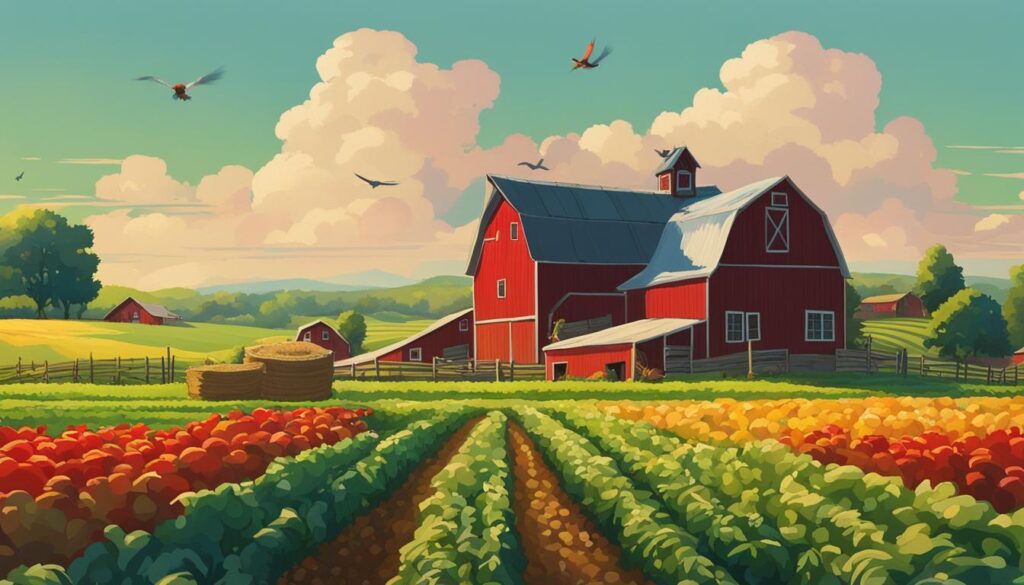
Designing the Aesthetics of Your Farm
In addition to optimizing productivity, designing the aesthetics of your farm can be a fun and rewarding aspect of Stardew Valley. Experiment with different layouts, decorations, pathways, and farm buildings to create a visually pleasing and customized farm.
The game also offers a variety of wallpapers, furniture, and flooring options to help you personalize your farm’s style. Let your creativity flow and make your farm a reflection of your unique vision.
From planting vibrant flower beds to creating charming pathways, there are endless possibilities to beautify your farm. Consider incorporating themed areas, such as a cozy picnic spot, a tranquil pond surrounded by trees, or a bustling marketplace with stalls.
Remember, the design of your farm is not just about aesthetics; it can also have practical benefits. For example, strategically placing scarecrows and sprinklers can both protect your crops and automate your watering system.
Expanding Your Stardew Valley Farm
As you progress and accumulate wealth in Stardew Valley, expanding your farm becomes a natural next step. Upgrading your barn and coop allows you to accommodate more animals, increasing your potential for profit and resource production. Consider investing in upgraded tools to streamline your farming process and save valuable time. By unlocking additional farm buildings, such as sheds, mills, and slime hutches, you can further enhance your farming operations and take advantage of new opportunities.
Expanding your farmhouse also offers numerous benefits. With each upgrade, you’ll gain more storage space to hold your growing collection of crops, animal products, and artisan goods. The ability to cook artisan goods in your upgraded kitchen not only adds variety to your menu but also allows you to earn more from the products you create. Upgrading your home also unlocks new customization options, enabling you to personalize your living space and make it truly your own.
When planning your farm’s expansion, it’s important to consider the balance between growth and sustainability. Ensure that you have enough resources, such as wood, stone, and money, to support the upgrades you have in mind. Prioritize the upgrades that align with your farming goals and playstyle, whether it’s focusing on animal husbandry, crop cultivation, or artisanal production. By strategically expanding your Stardew Valley farm, you’ll be able to continue growing and thriving in this charming rural community.
Putting It All Together: Creating Your Dream Farm
After exploring the best farm options and gathering valuable farming tips, it’s time to put it all together and create your dream farm in Stardew Valley. By considering the best farm layout, optimizing your crop and animal choices, utilizing your farming spaces efficiently, and adding your personal touch with unique aesthetics, you can build a farm that suits your playstyle and aspirations.
The first step is selecting the perfect farm layout that aligns with your goals. Experiment with the Standard Farm, Riverland Farm, Forest Farm, Hill-top Farm, and Wilderness Farm to find the one that suits your preferences. Remember that each layout offers its own benefits and challenges, so choose wisely.
Next, focus on maximizing profits by planting high-yield crops and raising lucrative livestock. Pay attention to seasonal opportunities and plan your crop rotation accordingly to ensure a steady stream of income throughout the year. Additionally, make efficient use of your farming spaces by utilizing crop rotation techniques, companion planting, and making the most of your greenhouse.
Lastly, don’t forget to add your personal touch to your farm’s aesthetics. Experiment with different layouts, decorations, and farm buildings to create a visually pleasing and unique farm that reflects your creativity. Let your farm be a sanctuary that combines productivity with beauty.
